43 Water Cycle In A Bottle
Water Cycle In A Bottle - Little Bins for Little Hands ... Apr 26, 2016 - Explore the water cycle for kids with this easy water cycle in a bottle activity. A simple way to introduce evaporation, condensation to young learners. Water Cycle in a Bottle - Water Cycle Activity for Earth ... Water Cycle in a Bottle Activity Use the permanent marker to write the parts of the water cycle activity onto the side of the bottle. You will want to write: Groundwater Condensation Evaporation Precipitation Draw arrows to show how the water rises as evaporation and descends as precipitation.
Water Cycle In A Jar Worksheets & Teaching Resources | TpT Water Cycle in a Jar Lab. by. Keeping Science Simple. 4. $1.20. PDF. This water cycle lab or in-class demonstration allows students to visualize several important steps in the water cycle. After completing the activity, extension questions and diagrams help students connect the lab experience with the actual water cycle.

Water cycle in a bottle
A Water Cycle Chamber - Utah Education Network Demonstrate and review the water cycle using a commercial water cycle chamber of your own model. With each of the 2-liter pop bottles, use a knife to poke a starter hole in the top portion of the bottle where it starts to straighten out. Distribute one bottle to each group. Water Cycle in a Bottle Science Experiment Setting Up for the Water Cycle in a Bottle Remove the labels from the bottles. Add a drop of blue food coloring to each bottle and fill about 1/3 of the way with water. Screw the caps on tightly. Doing the Water Cycle in a Bottle Experiment Let the kids decorate their bottles with clouds, water and rain drops. Water Cycle in a Bottle - YouTube Watch how to do the "Water Cycle in a Bottle" activity.
Water cycle in a bottle. Water Cycle in a Bottle - YouTube Here is a way to demonstrate the water cycle in a simple device made from two liter soda bottles. Evaporation.. condensation.. precipitation.. even clouds a... Student Project: Make a Cloud in a Bottle | NASA/JPL Edu Clouds form from the condensation or freezing of water vapor. Condensation is the process of a gas changing into a liquid. In this activity, the gas is water vapor and the liquid is the cloud you create. When water vapor cools, it turns into a liquid - or condenses - onto a surface. For example, take a cold water bottle outside on a warm day. PDF The Water Cycle - Winston-Salem/Forsyth County Schools The Water Cycle. Our bodies are made of 70% water. It is vital for all life on Earth. Almost 75% of the earth's surface is covered with water. Water is everywhere. The same water that existed on the earth millions of years ago is still present today. This is due to the water cycle. Earth's waters are Bottle Biospheres - Northern Arizona University Even if things start to crash, keep making observations. Molds are living things too. Think about the cycles that are happening inside the bottle as it warms and cools during day and night, light and dark cycles, and as water, oxygen and carbon dioxide, carbon, nitrogen and other nutrients cycle through the system.
Water cycle in a bottle - WikiEducator Building your own water cycle in a bottle Procedure: 1. Cut the bottom off of the soda bottle (approx. 60mm); don't throw out! 2. Place soda bottle on its side 3. Put the soil inside, about 1/3 full 4. Plant 2-3 plants inside 5. Tightly tape back on the bottom that was cut off in Step #1 Life Cycle Of A Plastic Water Bottle | My Own Water After consumers buy them and the water is drunk, the plastic water bottle is then thrown in the garbage or in rare cases, recycled. Unfortunately, a vast majority of water bottles go to the landfill (73-90% of them) where they can take up to 500-1000 years before decomposing. PDF Ecosystem in a Bottle - Weebly addition to the carbon cycle you will see the water cycle in action. Water will condense at the top of your ecosystem (from the water below), run down the sides/drip on to the soil (rain), and the cycle continues. ! Objectives: Create a model of an ecosystem; observing the relationship between the living and the nonliving components of the ... PDF CLOUD IN A BOTTLE - Museum of Science and Industry 1. Light a match. Hold the empty bottle over it, even inserting the match into the bottle's neck, and blow out the match so that the smoke enters the bottle. Quickly cover the top with your thumb. The smoke from the match will provide the 'dust' which the water vapor in your bottle can condense around to form our cloud.
Water cycle - National Oceanic and Atmospheric Administration The water cycle on Earth. Water is essential to life on Earth. In its three phases (solid, liquid, and gas), water ties together the major parts of the Earth's climate system — air, clouds, the ocean, lakes, vegetation, snowpack, and glaciers offsite link. The water cycle shows the continuous movement of water within the Earth and atmosphere. Miniature Water Cycles - Utah Education Network Remove the base by sliding a butter knife between the base and bottle and pushing. Glue can be removed with a sharp knife. Do not cut the bottom of the bottle. Simply remove the base. Step 2.Review the three parts of the water cycle with students. Tell students they will be building their own miniature water cycle in a bottle. Step 3. The Water Cycle - Experiments and Resources for Elementary ... An activity to illustrate how the water cycle helps to purify water. Condensation. Make a Cloud in a Bottle Highlighting the concepts of air pressure and temperature in cloud making, this experiment uses a burnt match and some water to create a cloud inside of a plastic bottle. Due to the use of matches an adult is necessary. PDF OS Water Cycle in a Bottle - ocpl.org Leave your bottle in a sunny window or outside for a while. Soon YOU can see the water creating condensation at the top, and it will "rain down the sides of the bottle! It's a tiny water cycle! Evaporation (from heat) Condensation (CIOUdS) The Water Cycle Collection (Runoff) Precipitation (Rain) Where else do YOU see this water cycle around YOU?
Building a Bottle Ecosystem | The Carbon Cycle Water: We recommend you bring your two liter bottle to the aquarium or pond to get water. This way you'll get the all of the microorganisms present in the ecosystem. If you do use tap water, it must sit in an open container for 24 hours before you use it.
PDF Exploring the Water Cycle Demonstrations Instructions Exploring the Water Cycle Demonstrations ... of water vapor in the bottle. 2. Squeeze the bottle very hard and then release the pressure quickly. Explain that when a compressed gas (the air inside the squeezed bottle) expands rapidly (releasing the squeeze quickly), it cools. An everyday example of this is the way a metal hairspray or deodorant
Water Cycle In A Bottle - Little Bins for Little Hands The liquid water goes up into the air in the form of steam or vapor (water vapor). When this vapor hits cooler air it changes back to its liquid form and creates clouds. This part of the water cycle is called condensation.
Water Cycle in a Bottle Science Experiment | Water cycle ... Water covers 3/4 of the earth's surface and all living organisms need water to grow and survive which is why the water cycle is important. learning about the water cycle should be fun. I compiled a list of 10 water cycle activities that will definitely make the kids amazed.
Rain in a Bottle Experiment - Playing With Rain It all begins with the warm (or hot) water in the bottle. Some of the hot, steamy water evaporates into the air in the bottle and increases the humidity in the bottle. When the ice cubes are placed on top of the bottle, the warm, moist air inside suddenly cools down.
DOC Water Cycle in a Jar - gwinnettcb.org 'Water Cycle in a Jar' is a hands-on activity in which students construct their own model of a natural system and observe its cycles. Alternatively, a teacher may construct just one large model for the class. Students may observe the water cycle, or use it to learn about needs of plants and/or animals, experiment with changing one variable ...
Water Cycle Activity for Kids - Make a Cloud in a Bottle DIY Pumping air into the bottle squeezes the molecules of gas closer together. When you pull out the cork, the gas expands and cools down, making the vapor condense into tiny liquid droplets, just like a cloud! The process of gas turning into a liquid is called condensation. Check out the Full Lesson on Water Cycle (6-8 Version)!
The water cycle in a bottle: simulation of a ... THE WATER CYCLE IN A BOTTLE: simulation of a hydrogeological basin Author: Mª Roser Nebot (Institut Manuel Blancafort, La Garriga, Barcelona, Spain) Co-author: Sílvia Leiva Hevia (Institut Llicà d'Amunt, Lliça d'Amunt, Barcelona, Spain) The activity can be implemented in a great range of ages, because it has many different levels of depth. It is based on the construction of an analogical ...
Cloud in a Bottle: A Quick Water Cycle Experiment - Legend ... About 30 minutes of Warmth. A match. 1) Cap the lid on a water bottle with just a little water left in it. If you have a few rambunctious fourth-graders to help, that's all the better. Just some water in a bottle. And some awesome kids. 2) Put the water bottle in a sunny window or some other warm place.
Make a Water Cycle Model - Weather Science for Kids How to make a water cycle model It is best to do this outside in a sunny place. 1. Place the mug in the bottom of the bowl 2. Add water around the mug so that it come up to ⅔rd of the mug - if you can draw on the bowl mark where the water level is. 3. Cover the bowl tightly in clingfilm and fasten in place with the string. 4. Watch what happens!
Water Cycle in a Bottle - YouTube Watch how to do the "Water Cycle in a Bottle" activity.
Water Cycle in a Bottle Science Experiment Setting Up for the Water Cycle in a Bottle Remove the labels from the bottles. Add a drop of blue food coloring to each bottle and fill about 1/3 of the way with water. Screw the caps on tightly. Doing the Water Cycle in a Bottle Experiment Let the kids decorate their bottles with clouds, water and rain drops.
A Water Cycle Chamber - Utah Education Network Demonstrate and review the water cycle using a commercial water cycle chamber of your own model. With each of the 2-liter pop bottles, use a knife to poke a starter hole in the top portion of the bottle where it starts to straighten out. Distribute one bottle to each group.
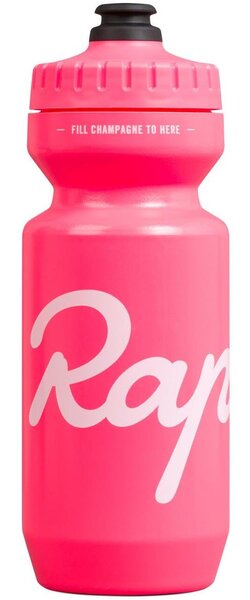


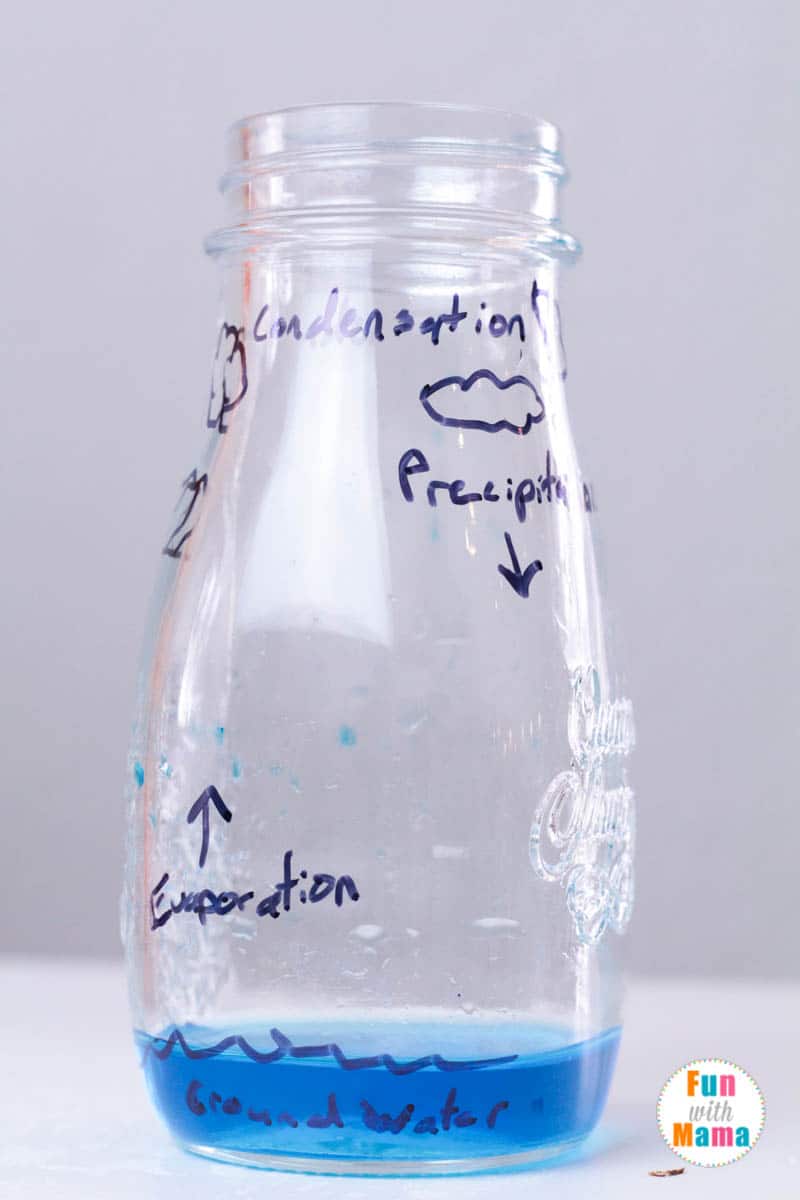
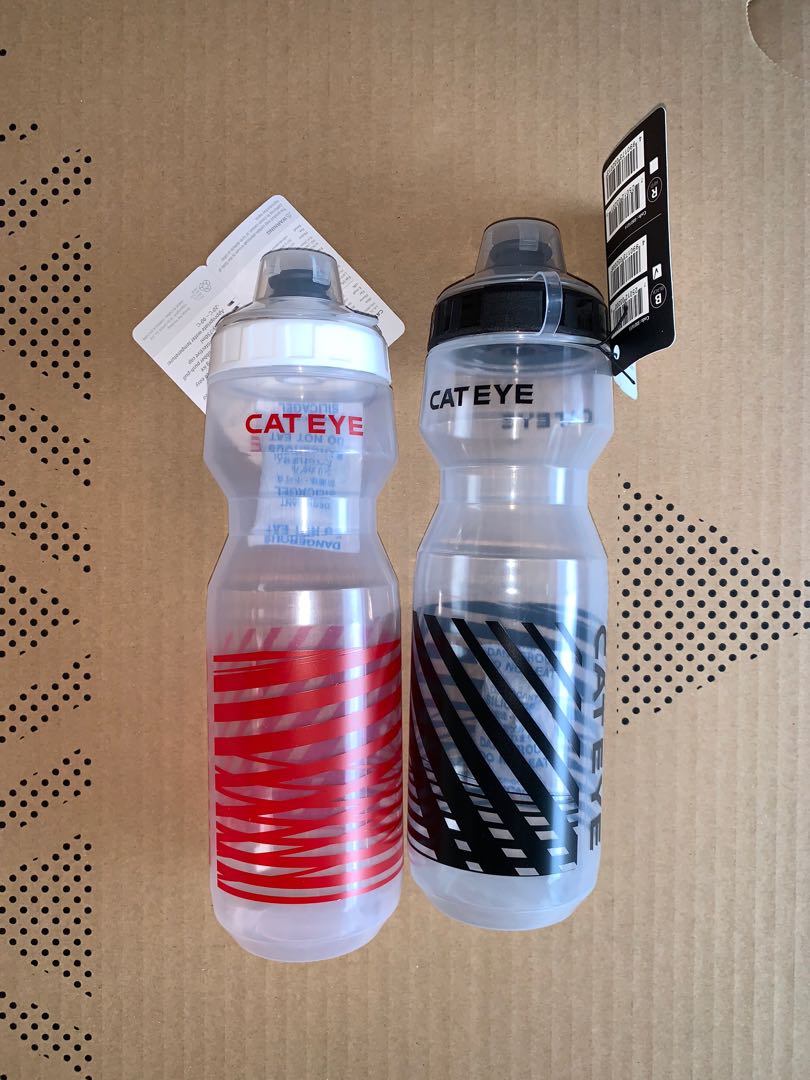


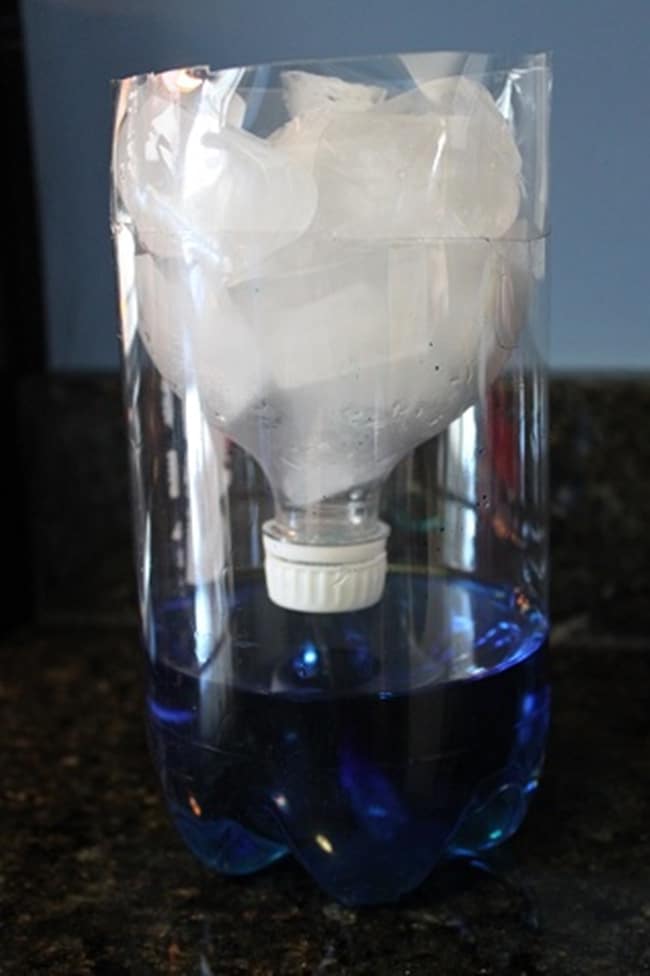

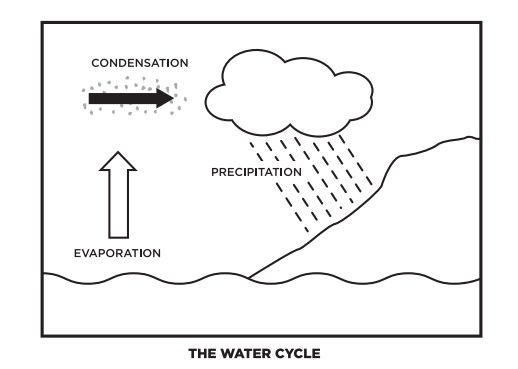

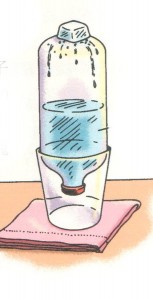

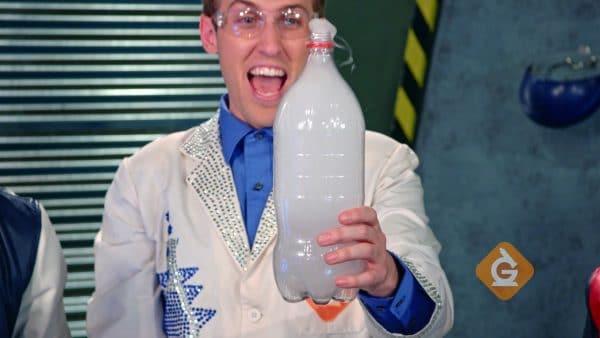

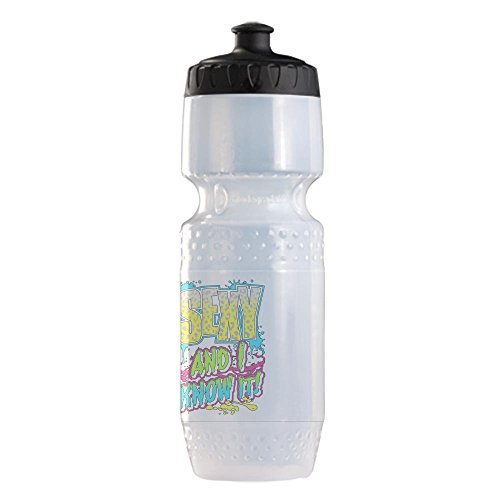
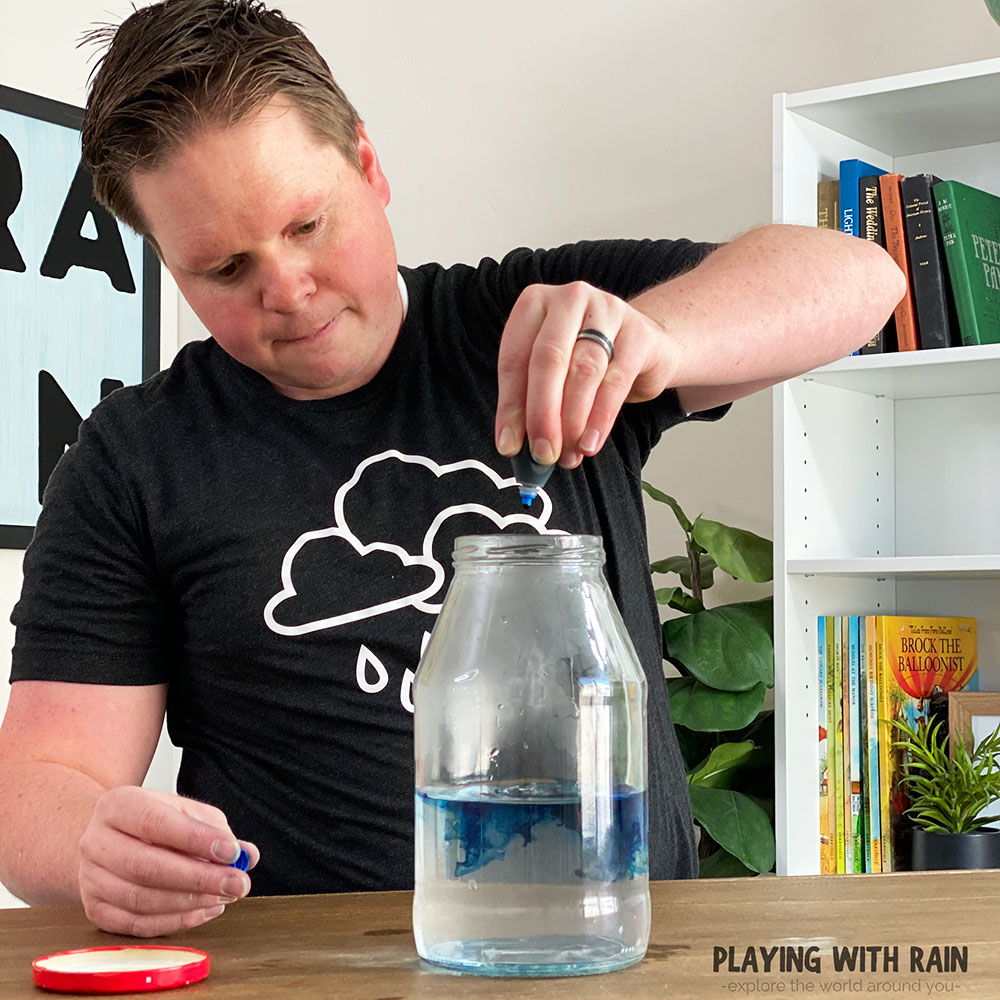


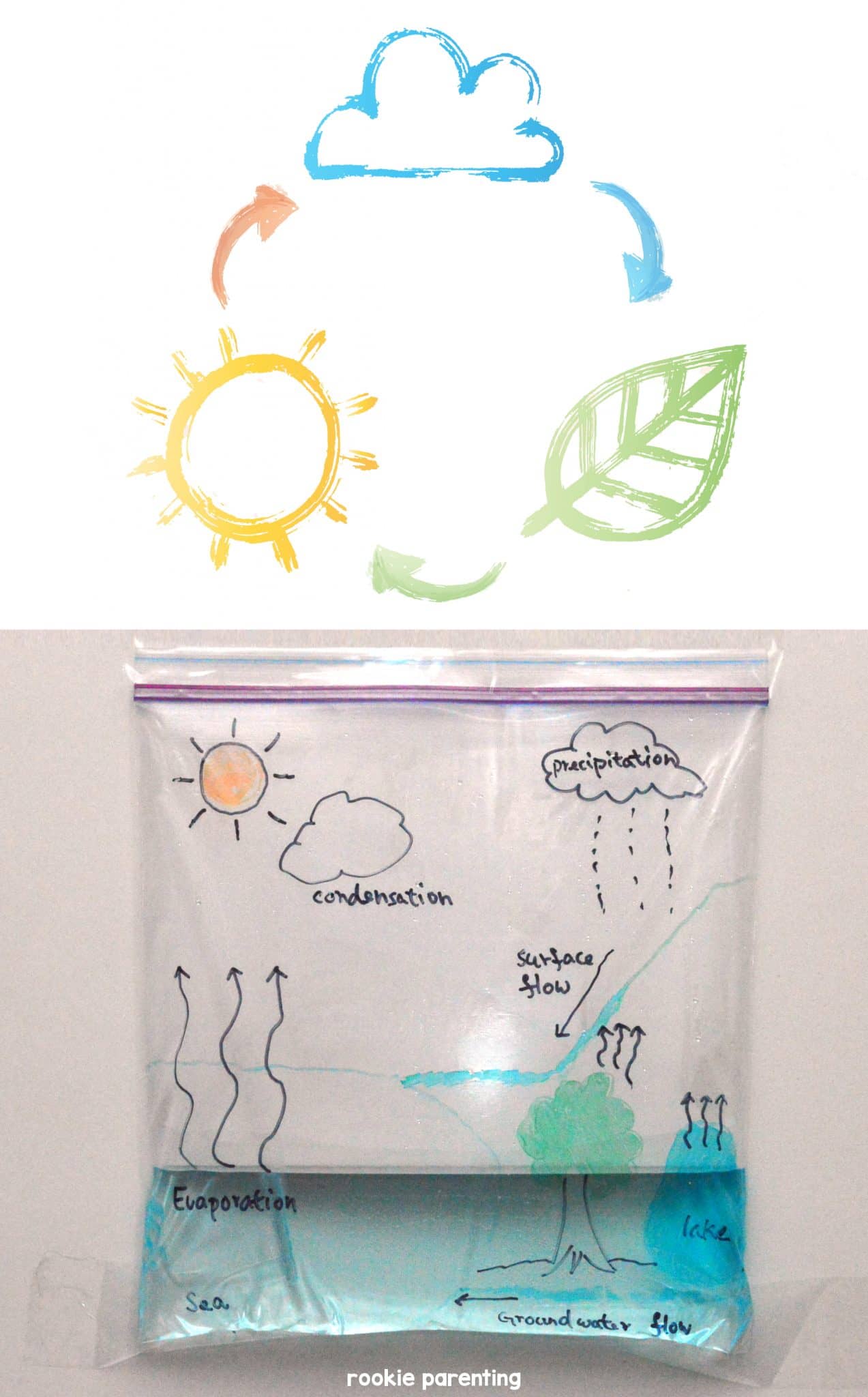


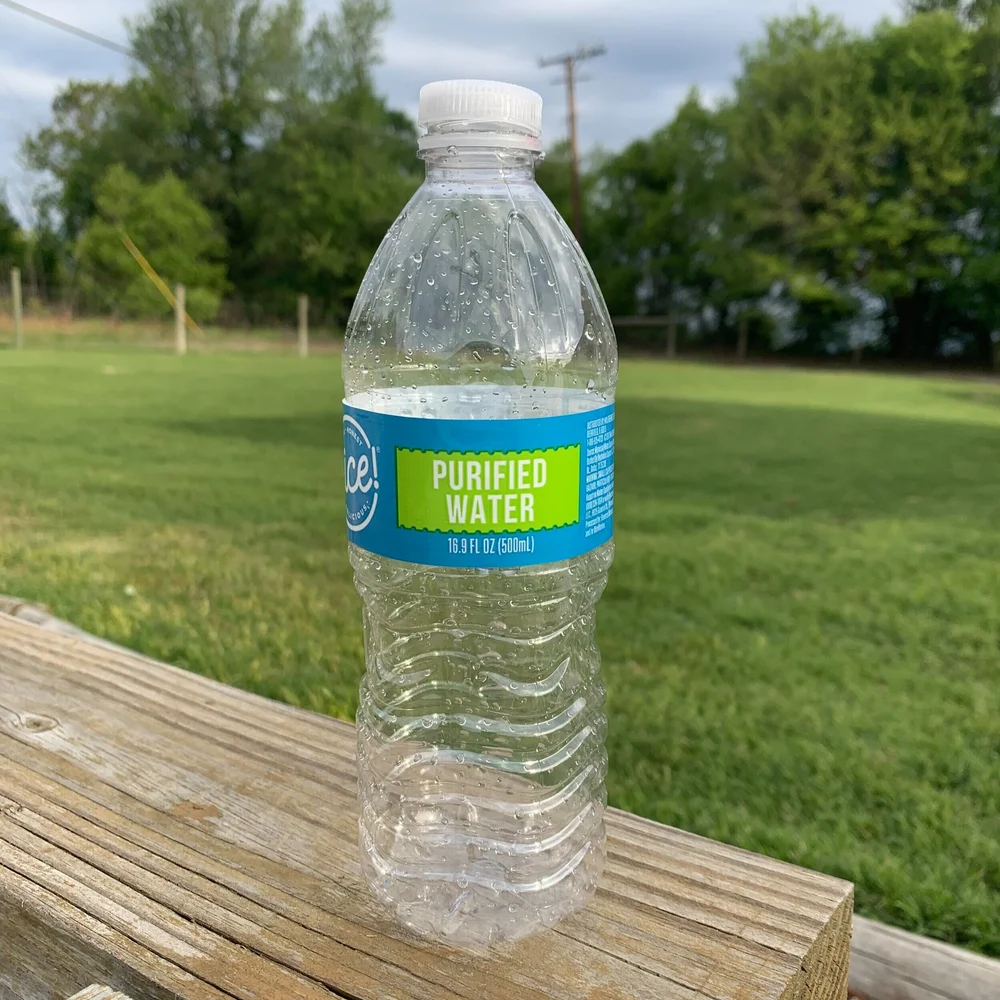


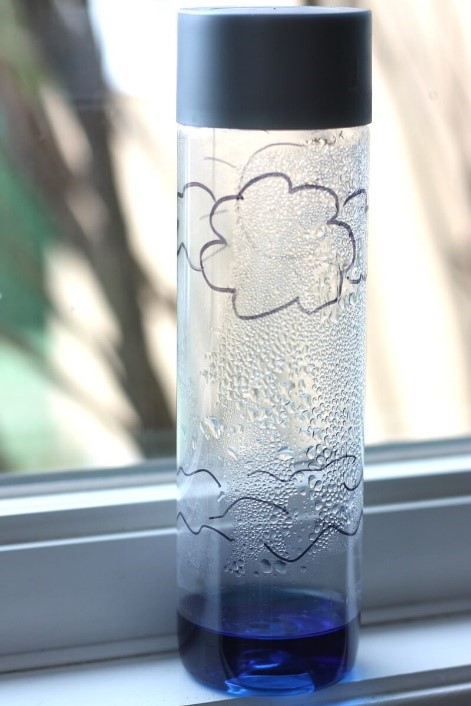
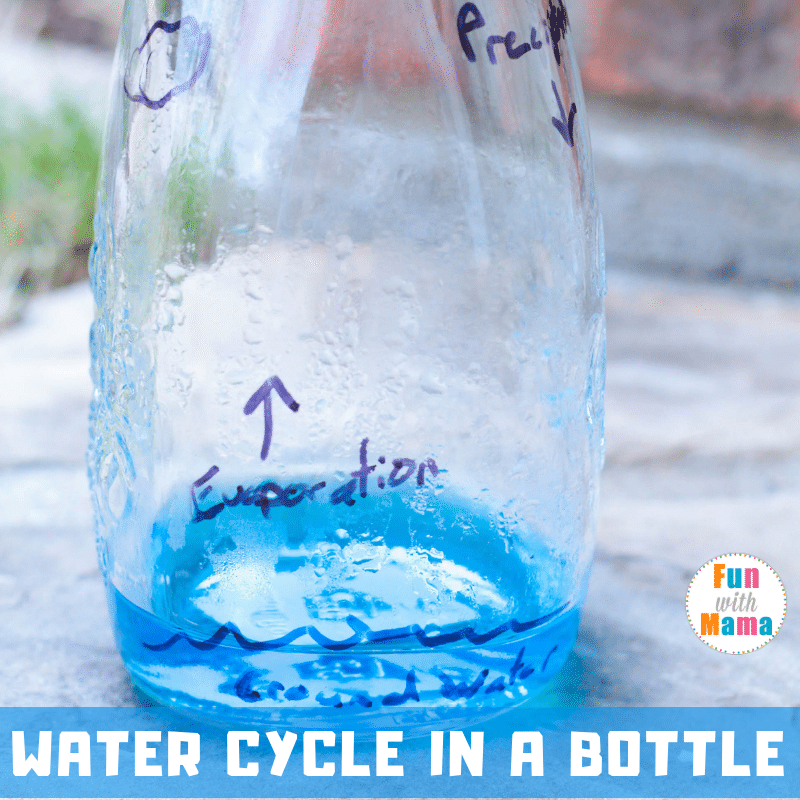


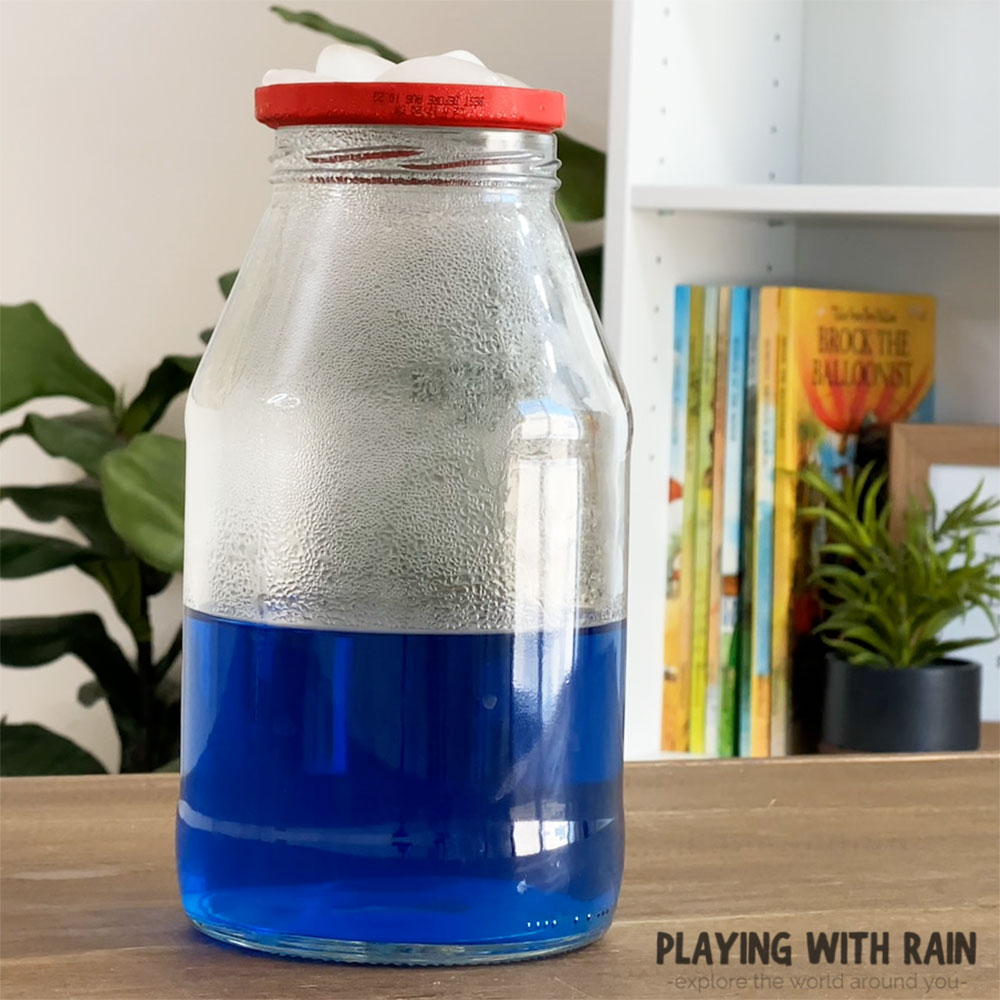

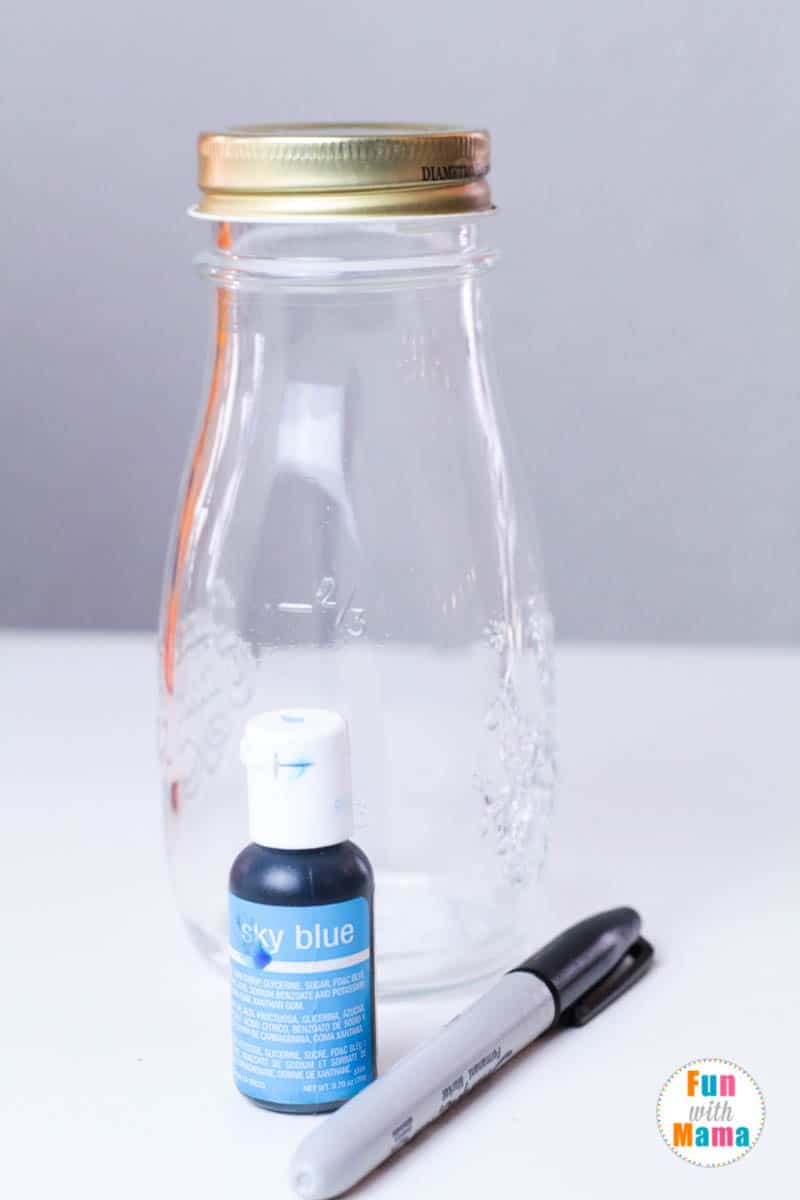






0 Response to "43 Water Cycle In A Bottle"
Post a Comment